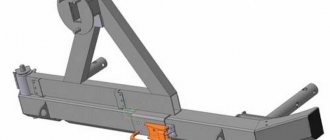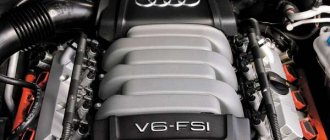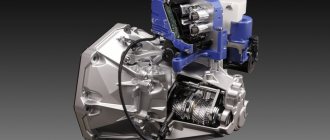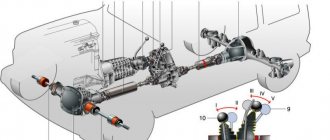The most significant disadvantage of the 2121 car is the engine power. Moreover, this drawback has come into the modern model since the time of the first cars produced in the USSR. The Niva is an SUV, but its horsepower remains stable at 82. This data is enough to successfully use the car for a long time. But it is worth noting that with an increase in horsepower, the functionality of the car becomes even more efficient.
Features of installation of the power unit
Installing a Priora engine on a Niva-Chevrolet or VAZ 2107 will take one or two days from a specialist. But first you should devote a lot of time and money to preparatory work. First you need to buy the engine itself. If you purchased a used motor, you need to rebuild it, which will further extend its service life.
Another advantage of disassembling and inspecting the unit is the ease of installation of the transition elements and cylinder block, especially if the parts for the Chevrolet Niva with the Priora engine were made by hand. It is better to carry out manipulations with a screwed oil pan, which will also require modification.
What should you prepare?
First of all, of course, the new engine itself. In the case when a used motor is purchased (as most often happens), there is no doubt about the need to disassemble and inspect it, so that you do not have to do this later and disassemble everything again. This approach provides one more advantage: if you decide to make the transitional fastening parts that are needed to install the 21126 engine in the body of a Niva or classic on your own, then in disassembled form it is easier to try on the cylinder block in place and find out the dimensions of the parts.
Start of preparatory work
Preparations for installation should begin by dismantling the flywheel of the new power unit. Its teeth will be incorrectly positioned in relation to the starter gear. It is necessary to purchase a suitable crown and place it on the flywheel.
It must be taken into account that the Chevrolet Niva with the Priora engine is modified only in the engine part. The gearbox remains unchanged, so care should be taken to ensure reliable and correct joining of these two blocks. It is optimal to carry out this operation using a special adapter plate. You can buy a ready-made element or make it to order. An alternative to connecting the gearbox and engine would be to fix the engine cylinder block directly to the gearbox. In this case, only three mounting bolts will be involved. Many car enthusiasts who have tested this in practice claim that the clutch is quite reliable.
Bottom line
Having studied all the characteristics of the engine, it can be noted that the Priora power unit is a reliable and well-developed engine. The use of modern technologies and new developments has allowed domestic developers to create a reliable and high-quality unit.
Additionally, this unit is supported by reviews from owners and the desire of many car enthusiasts, despite the additional costs of time and money, to equip their vehicle with a Priora engine.
"Niva-Chevrolet" with an engine from "Priora": the main stage of preparatory work
The updated engine will be slightly moved towards the cabin. To install it correctly, it is necessary to cut out a part of the metal partition separating the engine unit and the interior of the car. It is recommended to carry out the manipulation carefully so as not to cut out the excess part, since the element being processed ensures the rigidity of the body. Alternatively, you can use a grinder saw if you have the appropriate experience.
A support bearing will need to be installed at the end of the crankshaft of the newly installed motor. VAZ-2107 and 21213 Niva with an engine from Priora require element adjustment. Any turner will help you cope with this problem; the work will not take much time. Adapters with holes should be prepared for the motor mounting pads.
Oil pump work
Next, do the following to remove chamfers on the edges of the teeth:
- We compress, that is, remove, the drive gears.
- We trim one of the gears by 0.75 mm on each side.
- We cut the second gear to 11.5 mm (after trimming).
- We repeat the operation with the remaining gears (driven).
Also interesting: Generator Niva Chevrolet - voltage, repair and maintenance
Let's start working on the body. To do this we do the following:
- We release the driven gear axis from the housing.
- We form a longer axis from the drive roller.
- We insert the resulting axle into the body.
- We press the narrow gear onto the second drive shaft.
- Press on the wide gear.
- We fix the wide driven gear in the housing.
- We install a narrow gear into the housing.
The final stage of preparatory work
If the car being modified was equipped with a carburetor system, you should install a remote electric fuel pump, a gas pedal drive with a cable, and a fuel filter. A Volga injection element with an injector is quite suitable. You will also need to install a special adapter for the clutch block.
If the car is equipped with a fuel injection system, then installing and connecting the control electronics will not pose any special problems. When installing a VAZ-2112 or Priora engine on a Niva, you will have to spend a lot of time on preparation. However, the subsequent effect and the new “heart” of the iron horse are worth all the effort.
Installation of the power unit
Having completed all the preparatory work, you can begin installing the motor. For a professional repairman, this process rarely takes more than one day. Personal participation will require more time and effort.
The greatest amount of work will have to be done with the modification of the cooling and exhaust systems. An old manifold from a VAZ of early production will not fit the “Prior” engine, as well as connecting pipes and some elements of the cooling system. It is difficult to purchase the parts in question ready-made, but they can be made to order or using gas welding.
Installation overview
When all the preparatory work is completed, you can install the engine from the Priora into the engine compartment of the Lada Niva. The entire process, if you have the necessary tools and equipment, will take specialists no more than one day; performing such a procedure on your own is more difficult and longer.
Connecting the unit to the gearbox will not cause any problems; assembly and modification of the exhaust and cooling systems will take more time. An old exhaust manifold from a VAZ 2107 or Niva will not fit on a Priora engine. The easiest way is to make it using the same gas welding machine or order this part; it is difficult to purchase a finished product.
The same applies to the engine cooling system. Since it is impossible to connect the cylinder block, thermostat and radiator with old pipes, car enthusiasts make pipes themselves or with the help of craftsmen at their own discretion.
Therefore, the entire process of fitting these products is carried out locally, when the cylinder block is already on the cushions. Some craftsmen, after installing a unit from Priora to a classic, transfer the filler neck for engine oil, because it rests against the partition and it is very inconvenient to install the valve cover, as well as pouring oil into the engine.
If your VAZ 2107 car was equipped with a fuel injection system, then further assembly and connection of electronic control systems will not be very difficult. Various nuances may arise that will need to be addressed during the installation process. If the fuel was supplied using a carburetor, then you will need to tinker with the electronics, install a cable drive for the gas pedal, a remote fuel pump and filter, and organize a return fuel line.
You will have to deal with all these nuances when installing the Priora engine on a VAZ 2106; in many issues you will need advice or help from specialists. Nevertheless, the modern powerful engine from the VAZ 2170 will definitely breathe new life into your legendary classic Zhiguli model.
Return to contents
Engine advantages
The engine with 16 valves turned out to be very successful. Many owners install it not only on VAZ “classics”, but also on new models (“Niva-Chevrolet”, 2109, 2114). On such cars, installation of the power unit is greatly facilitated due to the combination and identity of most of the elements.
The VAZ-2107 with an engine from Priora has the following advantages:
- high engine performance in terms of torque, power and fuel consumption;
- the product is created using modern technologies;
- the versatility of many elements and components, compatible with other VAZ engines, allows you to install the unit on different car models;
- the design of the power unit from Priora does not imply constant adjustment of valves and tightening of the timing chain;
- The motor is considered one of the best among domestic units.
A Chevrolet Niva with an engine from a Priora, the price of which depends mainly on the general condition, turns out to be more economical without losing maneuverability and power. The unit will cost from 35 to 100 thousand rubles.
Design
Dimensions and features of the Chevrolet Niva trunk
Speaking about changes in design, first of all it should be noted that the model was released in a new body, the width and length of which have increased significantly. The new car body guarantees maximum reliability, since only high-quality equipment was used in its production. However, the main function of the body has remained unchanged - it is still the load-bearing part of the car.
In general, the car has become more voluminous and angular, but it does not look rude, but quite harmonious. The changes affected the headlights, which acquired a round shape, and the rear bumper, which was equipped with a special platform for loading. The wheels are now equipped with 16-inch rims, and direction indicators are located on the front fenders.
Colors
The manufacturer also provides a wide range of color shades to suit every taste. In particular, you can purchase the model in the following colors:
- silver;
- grey-green;
- bright red;
- gray-green with a dark tint;
- quartz;
- light brown metallic;
- metallic blue with a dark tint;
- black metallic with a blue tint.
Technical characteristics of the latest modifications of the Priora engine
The common model of the engine in question is released under the index 21126. The unit has a displacement of 1.6 liters and a power of 98 horsepower. In 2013, a new modification was released, which is equipped with the VAZ-2107.
For greater clarity, below is a table with technical indicators of the Priora power unit (21127).
| Year of issue | 2013 |
| Material of manufacture | Cast iron |
| Cylinder arrangement | Inline/4 |
| Number of valves | 16 |
| Piston stroke (cm) | 7,56 |
| Cylinder diameter (cm)/compression ratio | 8,2/11 |
| Working volume (cc. cm) | 1596 |
| Power (hp) | 106 |
| Torque (Nm) | 148 |
| Fuel consumption per 100 km, combined cycle (l) | 7 |
New items equipped with the engine in question
Soon, VAZ developers plan to put into mass production the updated Niva, which will be equipped with an engine from the Priora. The new power unit will make it possible to significantly reduce fuel consumption, while increasing the vehicle’s speed performance.
The plant is actively working to adapt the engine to the Niva. The car can be produced in two variations: with a unit with a capacity of 98 horsepower or a modified analogue that pulls 106 horses and has a torque of 148 Nm. In addition to the updated engine, the car in question will receive a new steering rack, subframe, improved seats, heating, and air conditioning will be installed.
"Chevrolet Niva"
"Niva-Chevrolet" with an engine from "Priora" has the following technical characteristics of the power unit, presented in the table.
| Motor location | Longitudinal (front) |
| Volume/power (cc/hp) | 80/1700 |
| Injection system | Distributed |
| Cylinder block | Inline/4 |
| Piston stroke/compression ratio | 80 mm/9.3 |
| Turbocharging | Absent |
| Number of valves | 16 |
| Type of fuel | Gasoline AI-95 |
| Cylinder diameter (cm) | 8,2 |
| timing belt | HE IS WITH |
The car reaches a maximum speed of 150 km/h, acceleration time to hundreds is 17 seconds. The fuel tank holds 58 liters, while consuming 9.6 l/100 km in mixed driving mode.
Motor device
Briefly about how the VAZ 2123 Chevrolet Niva engine works.
Cylinders
They were combined with the upper part of the crankcase. Like most VAZ engines, this power unit has cylinders operating in a 1-3-4-2 pattern. The lower part of the cylinder block is connected on five supports to the crankshaft.
1 — tension roller of the air conditioning compressor drive belt; 2 — air conditioning compressor drive belt; 3 — air conditioning compressor clutch; 4 — thermostat; 5 — throttle assembly; 6 — outlet pipe of the cooling jacket; 7 — coolant pump pulley; 8 - phase sensor; 9 — tension roller for the auxiliary drive belt; 10 — cylinder head; 11 - generator; 12 — power steering pump pulley; 13 — support roller for the auxiliary drive belt; 14 — cylinder block; 15 — auxiliary drive belt; 16 — crankshaft position sensor; 17 — auxiliary drive pulley; 18 — air conditioning compressor drive pulley; 19 — oil pan; power unit support; an exhaust manifold; receiver; cylinder head cover;
Crankshaft
Five-legged. Cast from cast iron. If necessary, the journals can be reground with a diameter reduction of 0.25; 0.50; 0.75 and 1 mm.
Also interesting: Buy Niva Lynx in Vladimir - prices for the new Lada “Bronto” (Niva Pickup)
Exhaust valves
Welded in two parts. One is an alloy of chromium, nickel and molybdenum, and the other is made of multi-component steel. The operating temperature of the exhaust valves is 700-900 degrees, since during engine operation they are heated by processed gases. In order for them to withstand such temperatures, a special heat-resistant alloy is applied to them.
Intake valves
Their rods are treated with nitrogen and hardened under the influence of high frequency current. This is enough to withstand operating temperatures of 350-500 degrees.
Pistons
The VAZ 2123 engine has pistons cast from an aluminum alloy. A layer of tin is applied to them to make the process of breaking in the car faster. The piston stroke is 80 mm, and it itself has a diameter of 82 mm. The compression ratio is at 9.3 atmospheres.
Camshaft
Cast from cast iron and installed in a removable aluminum housing. Its rotation is carried out by a single-row roller chain.
Chain
It is stretched by a spring-hydraulic tensioner. Its size has increased significantly. Until the engine starts, the tension is carried out by a spring, and during its operation it is provided by oil pressure.
Attached to the block itself with 11 bolts. Centering is performed using the power of two bushings.
Crankcase ventilation system
Closed, and crankcase gases are discharged through the oil separator into the intake pipe. From there they are transferred to cylinders and burned.
Owner reviews
The best recommendations can be given by the direct owners of the model in question, who have tested the car in various weather and road conditions. If you take a Chevrolet Niva with an engine from a Priora, reviews from owners indicate that the car has changed for the better. Special benefits include the following:
- the power unit has a solid reserve before major overhaul;
- fuel consumption has decreased, quite noticeably;
- high speed characteristics and power;
- reliability of the unit;
- high performance characteristics of the motor.
It’s not difficult to create a Niva-Chevrolet with an engine from a Priora. Some modifications to the cooling system and the seat for the unit will be required. All manipulations can be completed in just a couple of days.
The disadvantages of the device in question include one point that was noticed by some owners and specialists. If the timing belt breaks, the pistons inevitably interact with the valves, causing the latter to bend. To avoid this, you can purchase special pistons with recesses for the valves.
Modified options
Since it is not always possible to supply an engine of a certain foreign car, it is worth considering imported production options that require a little modification:
- The first candidate will again be the French engine from Peugeot XUD 11 series. Since the power of this unit is higher than that of the previous model, some changes will need to be made to the design of the Niva - replacing the gearbox. An acceptable option is a gearbox from Fiat Polonez. In addition, a good solution would be to replace the front supports of the power plant fasteners, pan and exhaust system. It is also worth replacing the drive elements with similar parts from the Chevrolet Niva.
Peculiarities
The Niva-Chevrolet with the Priora engine has some features compared to similar classic VAZ models. Firstly, installation of the power unit is simplified, since the location of the motor is identical. Secondly, variations were produced with almost the same engine as the Priora. In addition, a new production version of the domestic SUV is being developed, to which the engine from Priora, considered one of the best among our manufacturers, is adapted.
The updated Lada 4×4 will receive a Priora engine and a new subframe in 2015
The portal CARobka.ru has already reported that the updated version of the VAZ Lada 4×4 SUV will receive a new engine from the front-wheel drive model, and the engine will be positioned longitudinally. Several concrete facts have appeared about what awaits the Lada 4×4 '2015 and whether it awaits at all?
A short wheelbase, an 83-horsepower engine, all-wheel drive and a manual transmission - everything is simple, but how does it overcome off-road conditions?!
All this will entail several more changes that will have to be made to the design: the oil pan will have to be replaced, and the cardan joints in the transmission will give way to CV joints (constant velocity joints).
There are already several samples of the updated Lada 4×4. One, with a Priora engine, was prepared in the spring of 2013, another one is located on the territory of the Scientific and Technical.
Only the fate of the Lada 4×4 raises some concerns among Russian Automotive journalists, namely: the Niva could be killed by Alliance partners, GM-Avtovaz and the new president of AVTOVAZ, Bo Andersson. Hack, of course, is a strong word. Rather, “friends” can hinder the development of the project for deep modernization and the creation of a new Lada 4×4 as much as possible. We do not know what levers they have for these purposes. In general, such rumors have been circulating for a long time, since the appearance of the Duster, now they have strengthened in light of the release of the Indian Nissan Terrano, and next year they may become a postulate when Chevrolet introduces a new generation of the Niva model. As for Andersson, who came to AVTOVAZ, they say that he may take the side of the controlling shareholder and help drown out the glorious ballad of Lada 4x4. We very much doubt this. In addition, lately there has been a lot of talk about the VAZ SUV. Vice President for Products and Programs of AVTOVAZ OJSC Mikhail Ryabov said that the new Lada 4×4 will appear at the end of 2017-beginning of 2022 and will retain the inherent brutality of this model.
Nuances when installing an engine from Priora to Niva
Of course, standard units and body elements with suspension are not designed for the installation of the 21126th engine. But with minor modifications, everything can be done in the best possible way.
Let's consider the main nuances that may arise during the installation of the Priora power unit:
- The gearbox is also installed and mounted on 3 bolts (the engine itself, of course, is mounted longitudinally - unlike the classic front-wheel drive)
- It is necessary to replace the clutch from Priora and the flywheel, but keep the classic crown from Niva
- The pallet is slightly modified, since it will rest against the front beam. Many resort to the help of an angle grinder in this case, as well as welding
- The cooling system is being modified for a prioro engine
- The exhaust system is bought for a classic engine on the 21126th engine - there are already many ready-made options
Of course, in addition to the above points, certain problems may arise after installing the motor. For example, inaccessibility in the timing mechanism - in this case, when replacing the belt, you often have to drain the coolant. Due to the alteration of the sump, another negative point appears - now there is less oil in it than it should have been from the factory - this can lead to negative consequences under critical loads on the engine.
The clutch, according to reviews of many owners with already converted engines from Priora, is somewhat worse than on the same Chevrolet Niva, so its service life is reduced, and accordingly, you have to bother with replacement more often. But, as they say, everyone understands perfectly well what they are getting into when installing an engine of greater power and with non-standard mounts.
If you want to see what usually results from such tuning, the video review below will be a visual aid.
Such tuning takes a lot of effort and time, but this stopped few people in such cases!
That very moment: test drive of LADA 4×4 with LADA Priora engine
I just want to exclaim: “Well, AVTOVAZ, why the hell couldn’t you do this yourself?!” But we won't shout. Because, firstly, we roughly know what the hell (about a billion different reasons), and secondly, we are not going to ask stupid questions. It’s much more interesting to ride and understand whether the mutant turned out to be suitable.
The flocked panel no longer looks so orphan-like, the leather steering wheel is a little more comfortable to grip, and it’s more comfortable to sit on the seats, which, in addition to the leather upholstery, have a reinforced frame. It’s just a pity that such a seat cannot fundamentally change the driving position of a Niva anyway. The “tuning” combination is also not bad (it’s certainly more interesting than the standard one), and the only thing that infuriates it is the blue background of the trip computer display. The fuel remaining indicator is incredibly simple - just a stupid arrow, no red zones or buzzer. Thanks to this, we returned from the test with one liter of fuel on board - we only noticed the shortage at the very end.
Needless to say, we got carried away by the trip! A steel roof rack would be useful on a long journey, but power bumpers (the front one has a built-in winch) and a “ski” for protecting units made of five-millimeter metal may well come in handy even on a short outing. After all, the car is a real provocateur: the rear self-block, suspension lift, toothy off-road tires and arches cut out for this purpose are enough for Niva to gain almost complete freedom on the roads.
Where on a stock car you will definitely “throw away”, on this one you can fly almost without looking back. The car swallows huge holes, does not nod and does not “goat”. Calmly passes mind-blowing “diagonals”. Cheerfully flies into brutal climbs. Exactly cheerfully - so that you clearly understand: a standard car would have “died” even in the middle of this ascent. And the reason for the cheerfulness is the VAZ-21126 engine, mated to a completely standard Nivov transmission.
And the VAZ is still there
This 1.6-liter 98-horsepower sixteen-valve engine is found on the LADA Priora, Kalina and Granta, and along with the eight-valve engine from front-wheel drive cars, AVTOVAZ engineers have long been trying on the LADA 4×4. However, things would still be there (read - the project would remain a project), if not for the world of tuning. In the case of the presented “patient” we are dealing with a completely serious approach to the matter. The guys who built the car have an engineering staff and a production workshop with modern equipment. The car was built to order in a single copy, but the solutions found on it are planned to be replicated and offered to customers, both in the form of a turnkey car, and in the form of a kit for self-installation.
The engine was placed longitudinally under the hood, and so that it would not rest against the engine shield, it had to be moved forward a little. As we can see, there is minimal space at the engine shield, but there is even plenty of space left for the radiator. It would be possible to move the box forward, but then it would rest against the steering rods. Therefore, the box remained in place, a spacer appeared between the crankshaft and the engine flywheel, and the box is connected to the engine through another spacer, consisting of three parts. Such solutions are not new, but subsequent reliability, as a rule, is greatly affected by the level of execution.
For perfect docking, the engine had to be slightly “placed” on the right side in the direction of travel of the car - the level of rotation around the longitudinal axis was one degree. The docking was designed with the aim of leaving a maximum of standard parts in the transmission - clutch disc, pressure plate, release bearing - and minimizing the distance between the flywheel and the crankshaft. The flywheel was installed modified from Vesta; its gearing is like that of a “classic” one, but the connecting dimensions are like those of a “prioromotor” flywheel. The docking area is protected from dust and dirt by an original steel casing.
Niva engine characteristics
Years of manufacture – (1994 – present day) Cylinder block material – cast iron Power system – carburetor (21213) / injector (21214) Type – in-line Number of cylinders – 4 Valves per cylinder – 2 Piston stroke – 80mm Cylinder diameter – 82mm Compression ratio – 9 .4 Niva engine capacity 21213 – 1690 cm3. Engine power Niva 21213 – 81 hp. /5200 rpm Torque - 125 Nm / 3000 rpm Fuel - AI93 Fuel consumption - city 11.5l. | track 8.3 l. | mixed 10.5 l/100 km Oil consumption - 700 g per 1000 km Niva engine weight - 117 kg Overall dimensions of the Niva 21213 engine (LxWxH), mm - Oil in the Niva 21213 engine: 5W-30 5W-40 10W-40 15W-40 How much oil in the Niva 21213/21214 engine: 3.75 l. When replacing, fill in about 3.5 liters.
Malfunctions and repairs of the VAZ 21213 / 21214 Niva engine
Engine VAZ 21213 1.7 l. carburetor/injection (21214) in-line 4-cylinder with overhead camshaft, Niva timing belt has a chain drive. Based on the 214 engine, the VAZ 2123 engine is produced for the Chevy Niva; the differences in adapting the block for installing a pulley in the engine compartment and mounting attachments are technically almost identical. The main differences between the VAZ 21213 engine and the 2106 are the cylinder diameter is 82 mm, the cylinder head, the Niva 21213 engine block from the 2106 is smaller in height. Among the advantages of the 213 engine, it is worth noting the presence of a chain tensioner (no need to tighten it) and hydraulic compensators (no need to adjust the valves). Disadvantages of the Niva engine - noisy, consumes oil, prone to overheating and vibrations, low resource. The motor has all the problems of the classic series, the 21213 Niva engine still heats up, troits, knocks, etc., what the problems are, for each case, are described in detail HERE, in the problems and malfunctions section.
Tuning the Niva 21213 and 21214 engine
Chip tuning of Chevrolet Niva or 21214 engine
There is no point in writing about this for a long time because the Niva chip is useless, the atmospheric engine cannot be stirred up with a chip, and all the rave reviews are nothing more than an attempt to justify a waste of money, let’s move on.
How to cheaply increase the power of a VAZ 21213 engine
The question on the agenda: how to increase the power of a Niva engine without any special tricks? The first stage is to increase the piston stroke to 84 mm using a crankshaft from a VAZ 2130, 82 mm pistons with a piston pin offset of 2 mm and we already have 1.8 liters. The second stage is to bore the cylinders for an 84 mm piston, thus assembling the 1.9 engine for the field. To fully boost the VAZ 21213 engine, you need to add a more efficient carburetor, bore the cylinder head channels (how to do this is described HERE), the intake diameter is 33 mm and the exhaust diameter is 31 mm, it is advisable to use light connecting rods, in the end we will get about 100 hp. The third stage - we build a 2 liter motor. We buy on the market a tuning crankshaft with an 88mm stroke and 84mm pistons with a pin offset of 4mm. A complete modification of the VAZ 21213 engine will be completed after installing a Nuzhdin camshaft (or an analogue) with a lift of 11.2, a light flywheel, light connecting rods and a modified carburetor, all of which will give a total of about 110 hp.
Niva engine boring options
— piston of standard diameter, increased stroke 1.8 liters. 82x84
85 hp Maximum torque
135 Nm at 3000 rpm - larger diameter piston, increased stroke 1.9 liters. 84x84 - larger diameter piston, increased stroke 2.0 liters. 84x88
16 valve engine for Niva
From time to time on forums they raise the issue of installing a 2112 engine in a Niva; this is a rather difficult and pointless task, due to the fact that 16V engines love speed and are not well suited for an SUV. If you want speed, sell your car and buy a Priora. The Niva is not suitable for high speeds and its tuning should be aimed, first of all, at increasing traction at the bottom.
Turbine for Niva
The pros and cons are described HERE in the “Turbo Classic” section.
Compressor for Niva
We use kit kits based on the PK-23-1 supercharger or analogues with a pressure of 0.5 bar, injectors from the 406 Volga engine, the piston remains factory, the output is more than 100 hp. The resource will be reduced, but not critically. It is not recommended to install more efficient superchargers; the factory piston will not hold up and the engine will require significant and expensive changes.











